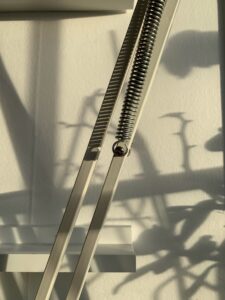Whether designing a compression, extension or torsion spring, exact spring specifications and measurements are essential to ensure a spring functions as designed. Engineers and designers must have a thorough understanding of a spring’s specifications and measurements in order to select the most appropriate spring for a particular application.  Spring specifications, for example, provide detailed information related to the spring’s design and performance characteristics. The physical measurements of a spring, i.e., its dimensions, are important for selecting the right spring for a specific application.
Spring specifications, for example, provide detailed information related to the spring’s design and performance characteristics. The physical measurements of a spring, i.e., its dimensions, are important for selecting the right spring for a specific application.
Of the many considerations undertaken when designing a custom spring, 4 significant specifications and measurements play an important role in determining the design and functionality of the spring. These are a spring’s diameter, its length, the number of coils, and its load capacity. All are vital in ensuring the spring application’s success. Here’s why:
Diameter
Calculating a spring’s diameter is one of the essential specifications needed in any spring design. Diameter measurements can refer to the wire diameter, the outer diameter (OD) or the inner diameter (ID). Wire diameter determines a spring’s strength and ability to withstand loads. The thicker the wire diameter, the higher strength and load-bearing capacity of the spring. OD is the width of your spring measured from outside the coils. OD is necessary for a spring to fit within the available space of mating parts or to be fitted inside a slot or hole. ID measurements must be considered if your spring is going over a shaft or mandrel to avoid friction and product failure. Diameter considerations are necessary for any compression, extension or torsion spring designs.
Length
One of the key dimensions in spring design is spring length, which is how the physical length of a particular spring design is measured. Compression springs, for example, are measured by their free length, which refers to the overall length of the spring when it is not subjected to any external force or load. In other words, it is the length of the spring when it is in its unloaded or relaxed state. The free length plays a role in ensuring that the spring fits properly within the intended assembly or system.
On the other hand, the length of extension springs is measured “inside the hooks,” which is the total length of the spring, including the body length and the gaps between the hooks. Adjusting the length “inside the hooks” of an extension spring is more delicate compared to adjusting the length of a compression spring. Extension springs are typically pre-loaded during installation to ensure they stay in place, so the length inside the hooks cannot exceed the available space between the handles or posts where it will be connected.
Torsion spring length requirements are measured by the spring’s total body length, i.e., the central, coiled part of the spring that undergoes torsional deformation or when storing rotational energy. The body length measurement does not include the end components such as the legs, hooks, or any other familiar terminal elements used in torsion spring design.
The Number of Coils
The number of coils a spring has is another important specification that can significantly affect a spring’s design as well as impact the performance of several key characteristics of the spring. For example, the number of coils can influence the spring rate, i.e., the stiffness of the spring. Also referred to as the spring constant, the spring rate is a measure of the force required to extend or compress a spring by a certain distance.
The number of coils can also relate to the load-carrying capacity of a spring. The more coils there are the more load can be distributed over a greater length, reducing the stress on individual coils. The number of coils also determines the maximum extension and contraction limits of a spring, and the available space for the spring to operate within its elastic range.
For torsion springs, the number of coils can affect the exertion of torque or rotational force when twisted. Increasing the number of coils will typically increase the amount of rotational force the spring can exert. It will also increase the overall size of the spring, which can impact the space required for the spring to operate properly. It’s essential to consider the available space when selecting or designing a torsion spring.
Load Capacity
The load capacity of a spring refers to the maximum force or load that the spring can handle without permanent deformation or failure and is an important specification in spring design. The load capacity is determined by various factors, including the material properties, spring geometry, and the intended application.
Different types of springs like compression springs, extension springs, and torsion springs, will have different considerations in terms of load capacity due to their distinct designs and applications. Dimensions, shape, and winding characteristics play a significant role in determining load capacity, which can also be influenced by such factors as material strength or working stress. Specifications such as spring diameter, the number of coils, the spring rate further influence the load capacity of a spring’s design.
At James Spring & Wire Company, our team of engineers has the technical know-how and guidance to help you with your spring specifications and design to assure you receive the highest quality products at the lowest cost. For additional information on our custom spring manufacturing services, contact James Spring & Wire Company today.

